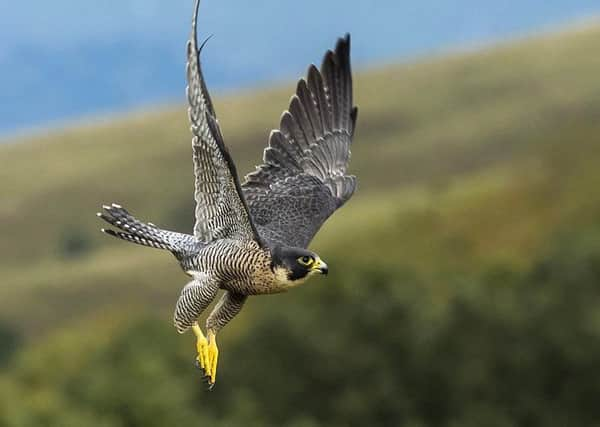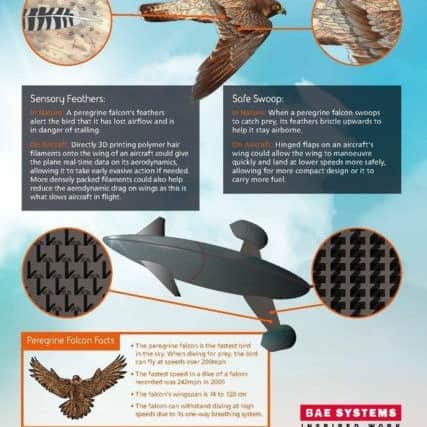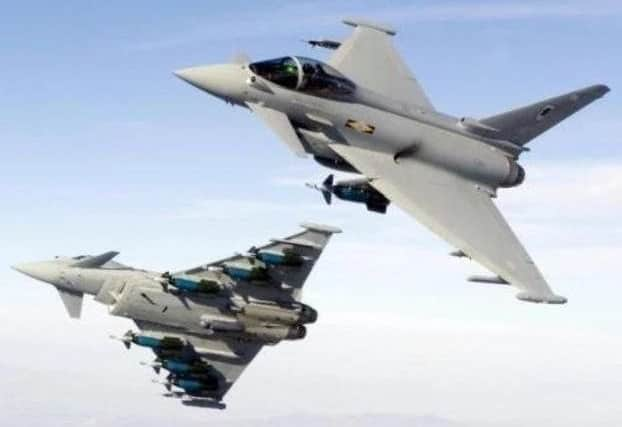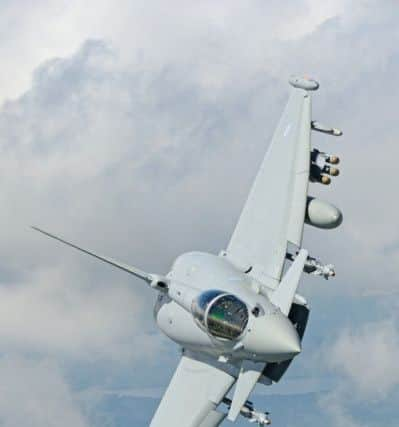Falcons' feathers will boost BAE jets


Scientists are studying the peregrine falcon to come up with new ideas to design new wings and control surfaces.
One idea is for ‘sensory feathers’ – 3D-printed polymer ‘hair’ filaments which would act like sensors on the body of an aircraft, providing an early warning system if it began to stall.
Advertisement
Hide AdAdvertisement
Hide AdThe peregrine which can hit speeds of 200mph as it dives on prey, uses sensitive feathers on the rear of its wings to warn it if its angle of attack is too steep.


Similarly the filaments on a jet can feedback to the computer adjusting the angles to keep the aircraft in the air at extreme conditions.
Similarly, more densely packed passive polymer filaments may also be capable of changing the airflow very close to the surface of the aircraft which could reduce ‘drag’ on the aircraft wing-skin which can slow aircraft in flight.
Another skill the peregrine has is being able to stabilise itself by ruffling its feathers after a dive or when coming in to land.
Advertisement
Hide AdAdvertisement
Hide AdSome of the feathers on the upper surface of their wings lift upwards to maintain the lift on their wings.


This allows them to manoeuvre more aggressively or if necessary fly more slowly.
Aircraft too could use this by having small flexible or hinged flaps which could let it to fly at lower speeds and so have a shorter landing distance or to be more agile in manoeuvring to avoid obstacles. The added safety margin gained using these could allow future aircraft of a more compact design or to carry more fuel. And the flaps could potentially lower aircraft noise pollution.
Professor Christoph Bruecker from City’s Aeronautical Engineering department is part of the five-year project.
Advertisement
Hide AdAdvertisement
Hide AdHe said: “The peregrine falcon is the world’s fastest bird, able to dive for prey at incredibly steep angles and high velocities. The research work has been truly fascinating and I am sure it will deliver some real innovation and benefits.”


Professor Clyde Warsop, a specialist in Aerodynamic Flow Control at BAE Systems’ military aircraft based at Filton in Bristol and Warton in Lancashire added: “Working with Professor Christoph Bruecker and his team at City, we’ve investigated how we could apply the unique abilities of the peregrine falcon to aircraft.
“Bio-inspiration is not a new concept; many technologies that we use every day are increasingly inspired by animals and nature.”